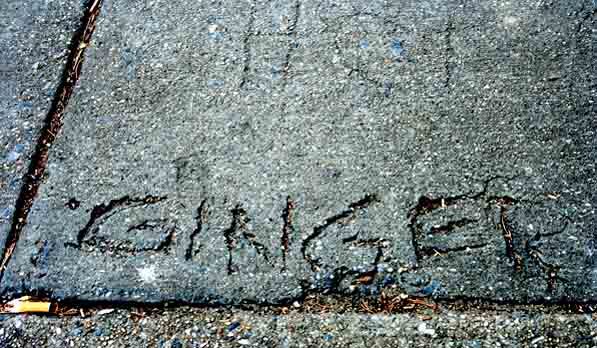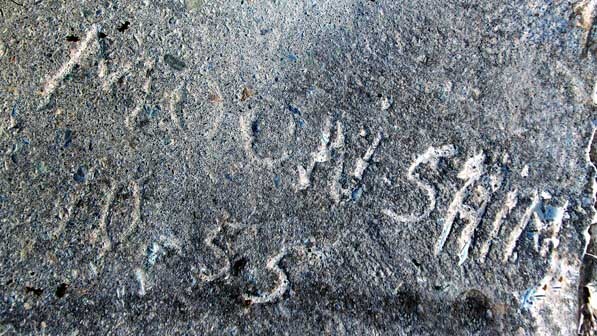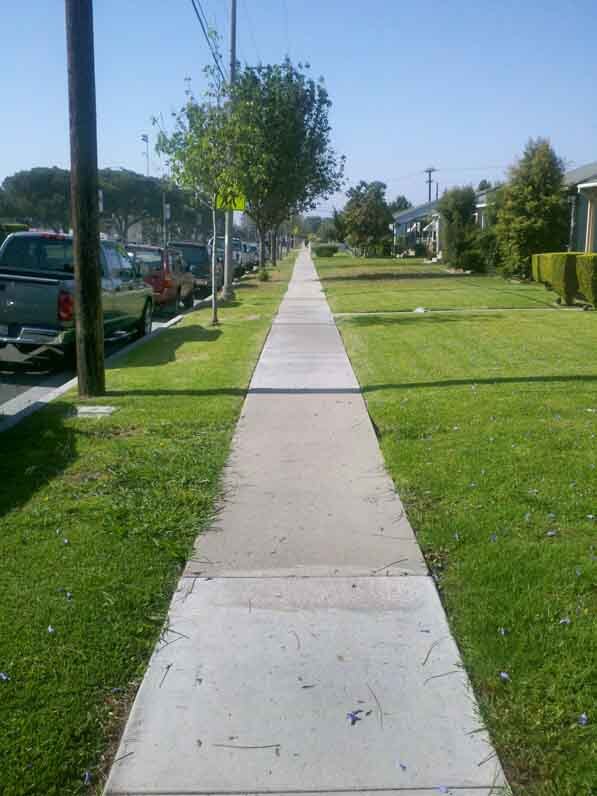Persistence: A Walk In Time

The other day while walking to mass, I crossed the cement apron that leads out of the alley behind the houses on Clark Avenue in Lakewood. I'd crossed that alley entrance from the time I was a boy and through the 32 years I walked to work after my father's death. But this time a narrow sheet of water, probably leaking from a backyard hose, spilled across the edge of the concrete. For the first time, I noticed there were names inscribed there, almost worn smooth.
The loose water brought out the contrast in the faint letters.
I'm not inattentive. The fractal qualities of the everyday interest me. Yet here were the persistent marks of lives that had neighbored mine which I had never seen, would never have seen except for the contingencies of the moment. I stopped.
Children had written their names awkwardly, haphazardly in the wet concrete but with respect for each other. Their names didn't overlap.
The vandalism of years ago was real, however. It couldn't be painted over like spray can graffiti. Only time and the passing of innumerable tires have restored a kind of innocence.
Messing with the wet concrete of a new sidewalk is a trope of suburban comedy -- Dennis the Menace meets exasperated workman. There is in the messing the childish expectation that everything might be smoothed back into its original condition, that nothing but childhood has to last.
The route that takes me across the alley and down Clark Avenue toward City Hall hardly ever varies (part of a mildly obsessive/compulsive personality). The route is the same, but the walk is always different, and not just because the conditions of light and air and ambient sound are various. In the midst of the many things that persist are as many that I see for the first and last time.

The pattern this morning of the leaves on the birch tree that leans over the sidewalk. The shining tracks of snails, gone by noon. The bloomed-out roses behind the chainlink fence that will be there, with subtle differences, for just another day or two.
The names of the children have been there in the concrete in front of the alley for years. They will be there until some upheaval bulldozes away the neighborhood, and I may never see them again (although I know now that they are there).
The names I didn't see in the concrete aren't any more or any less durable than the shadow across the sidewalk cast every bright day by a telephone pole.
I used to think that we sought permanence in marks like the children's' names and other forms of durable creativity. I think now that what we get is a provisional stability, despite our intentions. Enough stays the same on the sidewalk to City Hall to bolster my illusions about my place. Enough changes to question those illusions.



